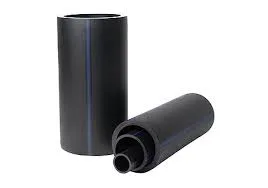Nov . 03, 2024 05:49 Back to list
ppr hot water pipe
Understanding PPR Hot Water Pipes A Comprehensive Guide
Polypropylene Random Copolymer (PPR) pipes have gained significant popularity in plumbing systems, especially for conveying hot water. Their unique properties and advantages make them an excellent choice for various applications, from residential to industrial settings. In this article, we will delve into the features, benefits, and considerations of using PPR hot water pipes.
What Are PPR Pipes?
PPR pipes are made from a thermoplastic polymer known for its durability, resistance to high temperatures, and low thermal conductivity. This makes them ideal for carrying hot water, as they can withstand temperatures up to 95°C (203°F) without deforming or leaking. PPR pipes are available in different diameters and are typically connected using heat fusion, which creates a strong, leak-proof joint.
Advantages of PPR Hot Water Pipes
1. Temperature Resistance One of the primary benefits of PPR pipes is their ability to handle high temperatures. This makes them suitable for hot water supply systems in homes, offices, and industrial applications.
2. Corrosion Resistance Unlike metal pipes, PPR pipes do not corrode over time, which significantly extends their lifespan. This resistance to corrosion also means that the quality of the water being transported remains unaffected.
3. Lightweight PPR pipes are considerably lighter than traditional metal piping systems. This feature not only makes transportation and installation easier but also reduces the load on supporting structures.
ppr hot water pipe

5. Chemical Resistance PPR pipes can resist a variety of chemicals, making them suitable for various applications beyond just hot water, including industrial and agricultural uses.
6. Ease of Installation The installation process for PPR pipes is straightforward due to their lightweight nature and simple joining methods. The heat fusion process ensures that joints are strong and reliable, minimizing the risk of leaks.
Considerations When Using PPR Pipes
While PPR pipes offer numerous advantages, there are a few considerations to keep in mind
- UV Sensitivity PPR pipes can be sensitive to ultraviolet (UV) light. If installed outdoors or in areas with significant sunlight, they should be properly protected to prevent degradation over time.
- Limited Size Range Although available in various diameters, PPR pipes may not cover all required sizes for specific applications. It's essential to ensure that the right pipe size is selected for the intended use.
- Temperature Limitations While PPR pipes are excellent for hot water, it's essential to monitor the temperature as prolonged exposure to temperatures above their rated limit can lead to failure.
Conclusion
PPR hot water pipes represent a modern solution for plumbing needs, merging durability with efficiency. Their ability to handle high temperatures, resistance to corrosion, and minimal heat loss make them an ideal choice for both residential and industrial applications. However, potential users should remain mindful of their limitations, particularly regarding UV exposure and temperature thresholds. Overall, when installed properly, PPR pipes can significantly enhance the performance and longevity of hot water supply systems.
-
Durable PP Rigid Sheet: Lightweight, Chemical Resistant Solutions
NewsAug.21,2025
-
PVC Grey Sheet for Extraction: Chemical Resistant & Durable
NewsAug.19,2025
-
Durable PVC Pipe Fittings for Plumbing & Irrigation Needs
NewsAug.18,2025
-
HDPE Steel Belt Reinforced Spiral Corrugated Pipe | High Strength
NewsAug.17,2025
-
HDPE Pipe Fittings: Durable, Leak-Proof Solutions
NewsAug.16,2025
-
Premium CPVC Sheet: High-Temp & Chemical Resistant Solutions
NewsAug.15,2025

